What to Wear in November in Vietnam for Every Region
Planning a trip to Vietnam in November? One of the most common questions travelers ask is what to wear in November in Vietnam. The weather changes a lot depending on where you go—the north can feel like autumn, the center is rainy, and the south stays warm and sunny. If this is your first time visiting, it can be hard to know what to pack. In this guide, we’ll walk you through the weather in each region and give you simple, honest advice on what clothes to bring so you can stay comfortable, dry, and respectful during your trip.
Is it cold in Vietnam in November?
If you're planning to visit Vietnam in November, you’re probably wondering if it gets cold. The short answer is: not really, at least not in most places. But the weather can be very different from north to south.
Northern Vietnam
In the north, the weather starts to cool down in November. Hanoi feels pleasant during the day, with temperatures around 22°C to 26°C (72°F to 79°F). It can get cooler in the evening, sometimes below 20°C (68°F). It’s not freezing, but you’ll want a light jacket or sweater if you go out at night.
If you’re heading to the mountains in places like Sapa or Ha Giang, temperatures drop more, especially in the early morning and at night. It can get down to 10°C to 15°C (50°F to 59°F). You won’t see snow, but it can feel quite cold if you’re not prepared. It’s a good idea to bring warm layers for these areas, especially for trekking or sunrise trips.
There’s not much rain in the north in November. Skies are often clear, and the air feels fresh. For us, this is one of the best times to visit northern Vietnam.
Central Vietnam
Central Vietnam can be tricky in November. This is still the rainy season, especially in cities like Hue and Da Nang. You might get several days of heavy rain, and there’s a small chance of typhoons in the early part of the month. Temperatures usually stay between 23°C and 28°C (73°F to 82°F), so it’s still warm, but the humidity is high, and the rain can feel nonstop at times.
Hoi An and Hue can flood in November, so it’s important to pack smart. Waterproof clothes and sandals are more useful here than thick jackets. You won’t feel cold, but staying dry is your main challenge in this region.
Southern Vietnam
The south has dry and warm weather in November. This is the start of the dry season, and it’s a great time to visit. Temperatures usually range from 25°C to 31°C (77°F to 88°F). You’ll still feel some humidity, but it’s not as intense as the months before.
Rain becomes rare in places like Ho Chi Minh City and the Mekong Delta. You’ll mostly see blue skies and sunshine. It’s not cold at all here, so pack light clothes, sun protection, and comfortable walking shoes.
What to Wear in November in Northern Vietnam
Northern Vietnam starts to feel like autumn in November. The days are still warm, but mornings and evenings can get quite cool, especially in mountain areas like Sapa, Ha Giang, and Bac Ha.
If you’re staying in Hanoi or Ninh Binh, pack light long-sleeve shirts, cotton trousers or jeans, and a light sweater or jacket for the evening. You won’t need winter clothes, but it’s better to bring a few layers so you can adjust throughout the day. The mornings can feel fresh, and by afternoon, it may be sunny again.
If you're planning to go hiking in Sapa or take a motorbike loop in Ha Giang, you'll need more than just a sweater. Bring a warm jacket, thermal top, and scarf, especially if you're staying in a homestay in the mountains, where houses can feel cold at night. A beanie or warm hat also helps, especially in high elevations.
Don’t forget comfortable walking shoes or trekking shoes. Many of the best attractions in the north involve walking—through rice terraces, hill villages, or old towns. The paths can be uneven or slippery in the morning due to dew, so good grip matters.
You probably won’t need heavy rain gear in the north this time of year, but carrying a small umbrella or light raincoat can still be useful for occasional light showers.
What to Wear in November in Central Vietnam
November in Central Vietnam is wet and unpredictable. Hue, Hoi An, and Da Nang get some of their heaviest rainfall during this month. If you plan to travel here, the most important thing is to stay dry.
Pack quick-dry T-shirts, light trousers or shorts, and a light waterproof jacket or poncho. A foldable umbrella is useful too, but rain often comes with wind, so a poncho is more practical. Leave your jeans at home for this part of the trip—they stay wet for hours and feel uncomfortable.
Waterproof sandals or rubber flip-flops work well here. Many streets flood after heavy rain, especially in Hoi An. If you wear sneakers, they’ll get soaked quickly. For walking tours or travel days, breathable hiking sandals are a good option.
The temperatures are still warm during the day, so you don’t need heavy clothes. You can bring a light sweater for evenings, especially if you’re riding a motorbike or spending time outdoors.
You might still get a few dry, sunny days. If you’re lucky, you can go to the beach, so bring a swimsuit just in case. Hoi An and Da Nang beaches are beautiful when the sun comes out, even in November.
What to Wear in November in Southern Vietnam
Southern Vietnam is warm, dry, and sunny in November. It’s one of the best months to visit places like Ho Chi Minh City, Can Tho, Ben Tre, or Phu Quoc. The rain starts to fade away, and the temperatures stay steady around 27°C to 31°C (81°F to 88°F).
You’ll want to wear light, breathable clothes—T-shirts, tank tops, shorts, or light dresses. Cotton and linen work best in this weather. Don’t wear anything too thick, because you’ll sweat in the sun, even in the morning.
Since the sun is strong, bring a hat, sunglasses, and sunscreen. Many travelers skip sunscreen because it looks cloudy, but UV rays are still strong. The sunburn sneaks up on you, especially if you’re out all day on Mekong boat rides or on walking tours in the city.
Shoes should be comfortable and breathable. I usually wear sneakers or closed sandals for walking in cities, and I switch to flip-flops for the beach or guesthouses. If you're planning to explore local markets, temples, or night food tours, choose something that can handle both pavement and a bit of dust.
You won’t need warm clothes in the south. Even at night, it stays hot. Just bring something with long sleeves in case you want to protect your skin from the sun or mosquitoes.
Cultural Considerations for Dressing in Vietnam
Vietnam is quite relaxed when it comes to clothing, but there are still a few things to keep in mind, especially when visiting temples or smaller villages.
When you visit temples or pagodas, you should cover your shoulders and knees. This applies to both men and women. Sleeveless tops, tank tops, and short shorts are not suitable. A long-sleeve shirt, light scarf, or sarong can help if you're wearing something less modest. Many places won’t stop you from entering, but it's polite to respect the customs.
In rural areas or small towns, locals dress more conservatively than in the cities. You don't need to wear long pants all the time, but avoid very revealing or tight clothes. You may get some stares; it's not dangerous, but you might feel uncomfortable.
In big cities like Hanoi or Ho Chi Minh City, people wear modern clothes. Shorts, sleeveless tops, and casual outfits are fine in most situations. Still, flashy or overly “party-style” clothing might draw attention in the daytime.
At the beach, swimwear is acceptable, but only at the beach or hotel pool. Don’t walk around town in a bikini or shirtless, even if it’s hot. That’s considered rude.
Accessories & Extras to Pack
Packing the right extras can save you time, money, and hassle while traveling in Vietnam. Here’s what we recommend bringing:
Compact umbrella or poncho: Even in dry areas, short rain showers can happen.
Lightweight scarf: Useful for temple visits, sun protection, or even as a pillow on the bus.
Sunscreen: It’s expensive and harder to find in local shops, especially for sensitive skin.
Insect repellent: Mosquitos can still be a problem, especially near rivers and in rural areas.
Laundry detergent sheets or powder: Many guesthouses offer laundry service, but if you pack light, you may want to wash a few items yourself.
Refillable water bottle: Many hotels and cafes offer free water refills.
Small daypack or sling bag: Good for holding your daily items like water, sunscreen, and rain gear.
Hand sanitizer and tissues: Public toilets don’t always have soap or paper.
FAQs
What is Hanoi like in November?
Hanoi is calm, cooler, and more pleasant in November. The air is cleaner than in the summer, and there’s less rain. Locals start wearing light jackets, and the city feels more relaxed. It’s a great time for walking, sightseeing, and eating outside. If you don’t like extreme heat or heavy rain, November is a great time to visit.
Is November a good month to visit Hanoi?
Yes. November is one of the best months to visit Hanoi. The weather is cool, comfortable, and mostly dry. You can walk around the Old Quarter, visit lakes and museums, or enjoy local food without sweating all day. It's also a beautiful time to see yellow leaves in parks and streets.
How should I dress in Hanoi?
You should dress in light layers. During the day, a T-shirt and trousers or a long skirt are comfortable. In the evening, you may need a sweater or jacket. Hanoi is not too strict about clothing, but try to keep it neat and respectful, especially in public places or temples.
Is it OK to wear shorts in Hanoi?
Yes, it’s OK to wear shorts in Hanoi, especially for tourists. Locals also wear shorts, but usually longer ones. If you're visiting temples, wear longer shorts or switch to trousers. In casual settings, shorts are fine.
What should a woman wear as a tourist in Vietnam?
Wear comfortable and modest clothes. Loose pants, midi skirts, breathable tops, and dresses are good choices. Avoid very short or tight outfits, especially when visiting religious or rural places. Bring a scarf for temple visits and a sweater for cooler evenings in the north.
What is the dress code for Hanoi Temple?
There isn’t a strict dress code posted at most temples, but you should cover your shoulders and knees. Wear long pants or a long skirt and a sleeved shirt. Avoid hats, flashy clothing, and loud behavior inside.
What clothes to wear in Hanoi in winter?
Winter in Hanoi starts around December, but by late November, it can already feel cool. Wear long-sleeve tops, trousers, and a light to medium jacket. It doesn’t snow, but it can feel damp and chilly, especially in the early morning and at night.
Conclusion
Now you know what to wear in November in Vietnam for every region, from warm layers in the north to rain-ready outfits in the center and light clothing for the sunny south. Vietnam has a lot of variety, so it’s important to pack based on where you’re going and what you’re planning to do. We hope this guide helps you feel more prepared and confident when packing for your trip. If you're looking for more tips on traveling around Vietnam, from food to culture to places to visit, keep reading—we've got more helpful guides for you.
Send us your comments about : What to Wear in November in Vietnam for Every Region
Required fields *
You might also be interested
Our clients’ favorite journeys to customize
Looking for inspiration? Discover some of our most popular tours in Vietnam, highly appreciated by our travelers. They are a great starting point to help you choose the perfect journey through Vietnam, Laos, Cambodia, Myanmar, or Thailand—whether you’re traveling solo, as a couple, with family, or with friends.
And since this is your trip, feel free to customize it just the way you like!
Vietnam Cambodia Itinerary 14 Days
Hanoi – Hoa Binh – Mai Chau – Ninh Binh – Halong bay – Hue - Danang – Hoian – Saigon – Ben Tre - Can Tho – Saigon - Siem Reap Angkor - Tonlé Sap - Siem Reap – Ta Prohm - Departure
Vietnam 14 Day Itinerary
Vietnam 14-day itinerary covers the country’s top highlights and quintessential experiences for an unforgettable journey.
Honeymoon Tour Pakcages In Vietnam 12 Days
Saigon Arrival - City Tour – Mekong Delta – Danang – Hoian - by flight - Da Nang – Hanoi - by flight – Halong - overnight on junk – Departure
Authentic Hoang Su Phi Trekking Tours
Hoang Su Phi trekking tours take you to stunning terraces, meet few tourists, connect with locals and enjoy authentic culture.
Best Nha Trang Beach Tour 4 Days
Saigon/Hanoi – Nha Trang relaxation – Saigon/Hanoi – Departure
Mekong Delta Bike Tour Itinerary 7 Days
Cycle through the Mekong Delta in 7 days, discovering floating markets, orchards, craft villages, and tranquil green islands.
Are you interested in this tour?



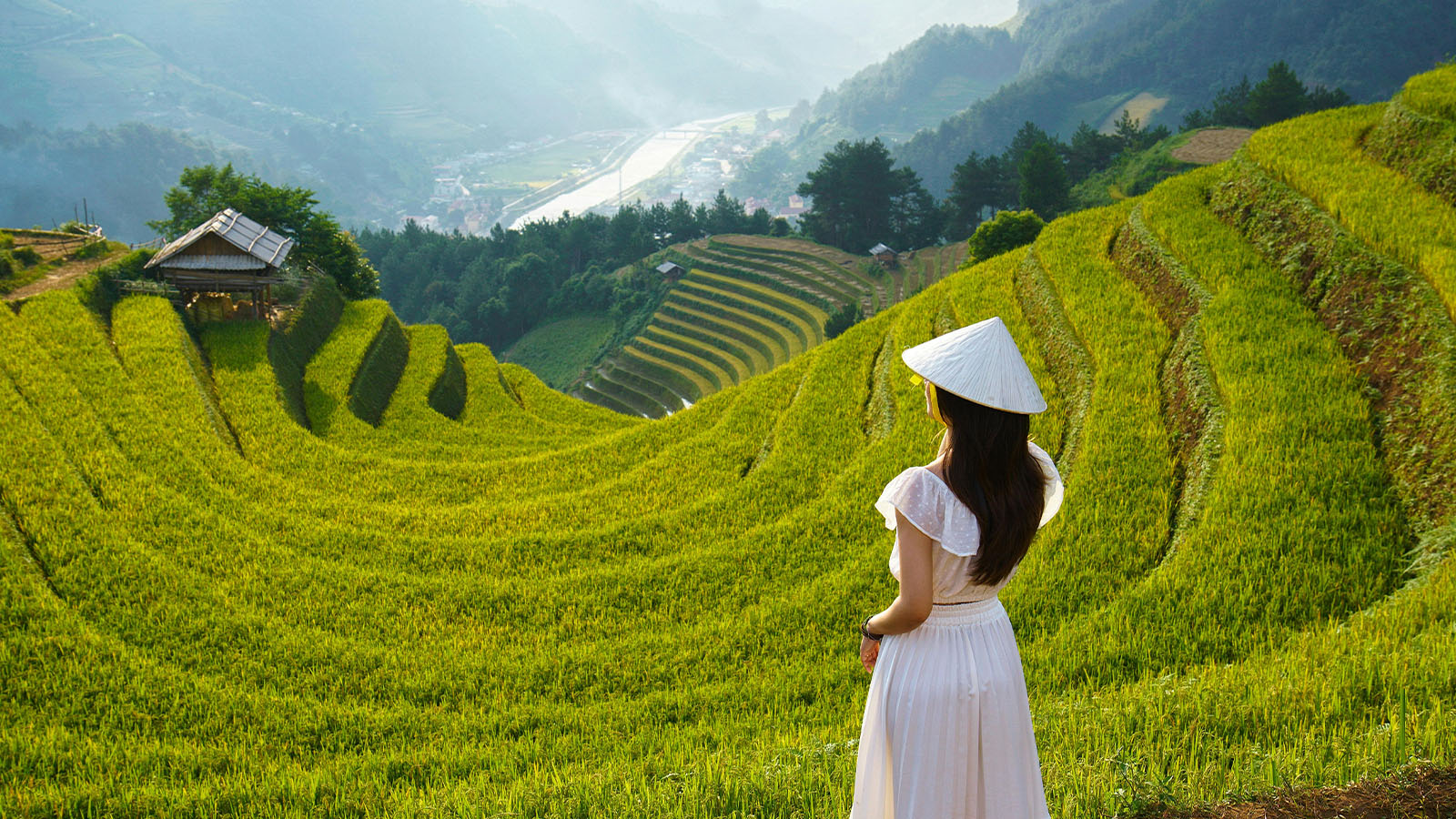

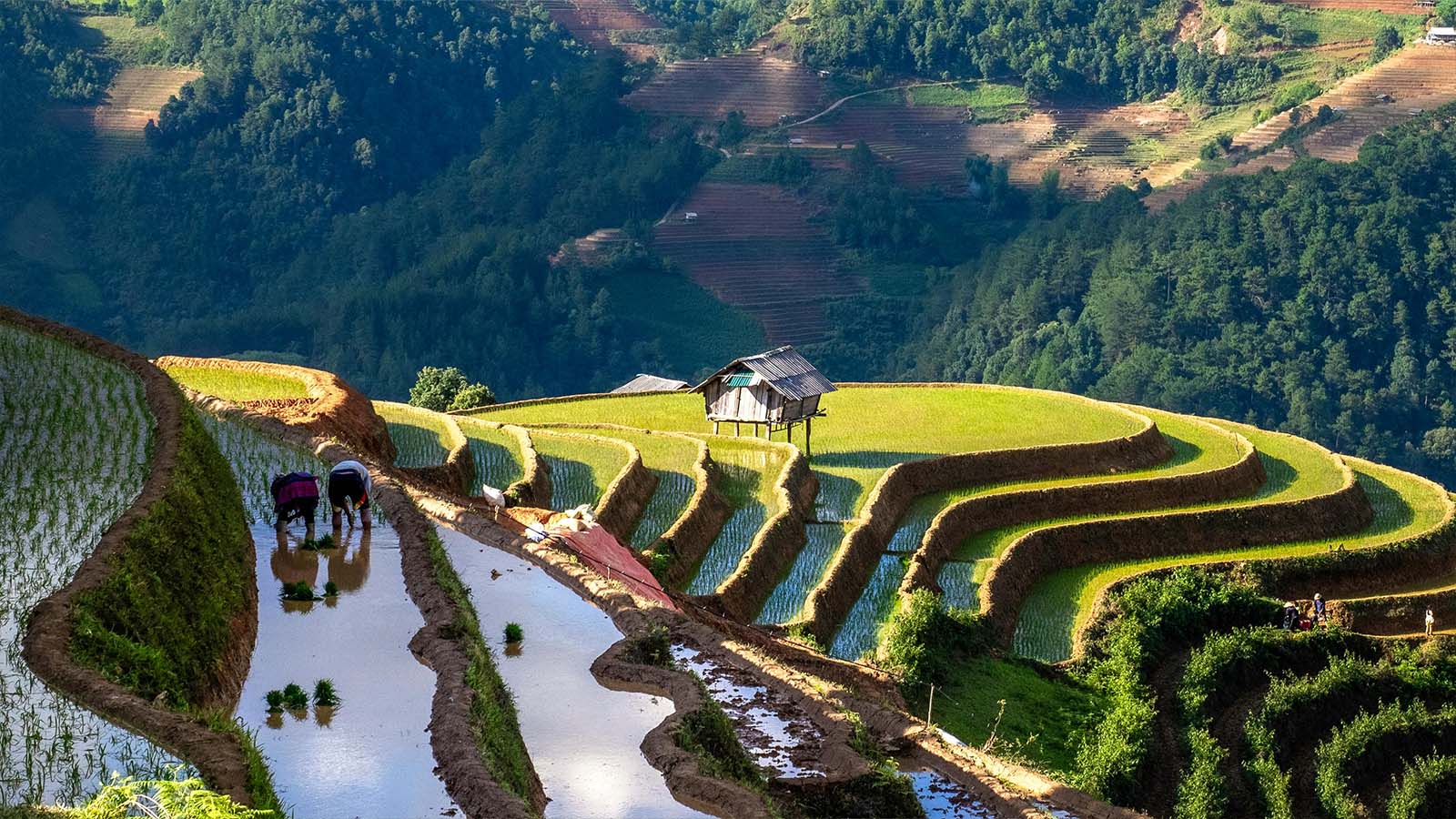
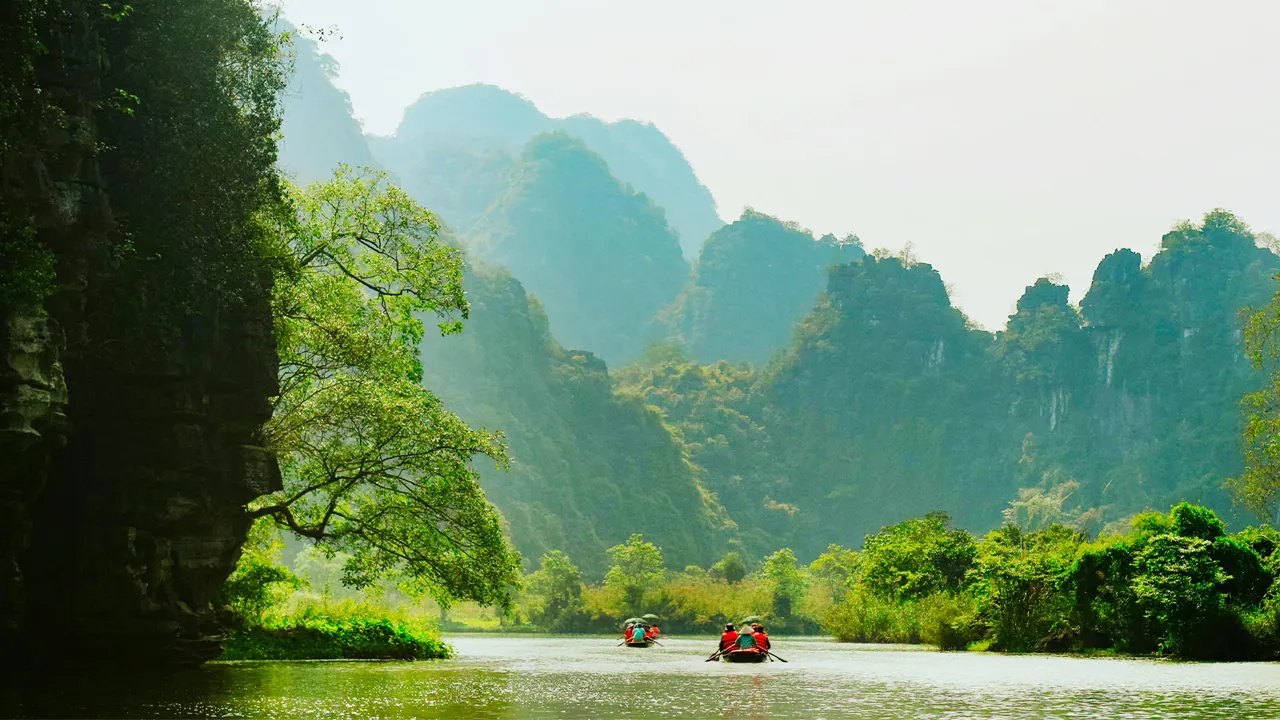

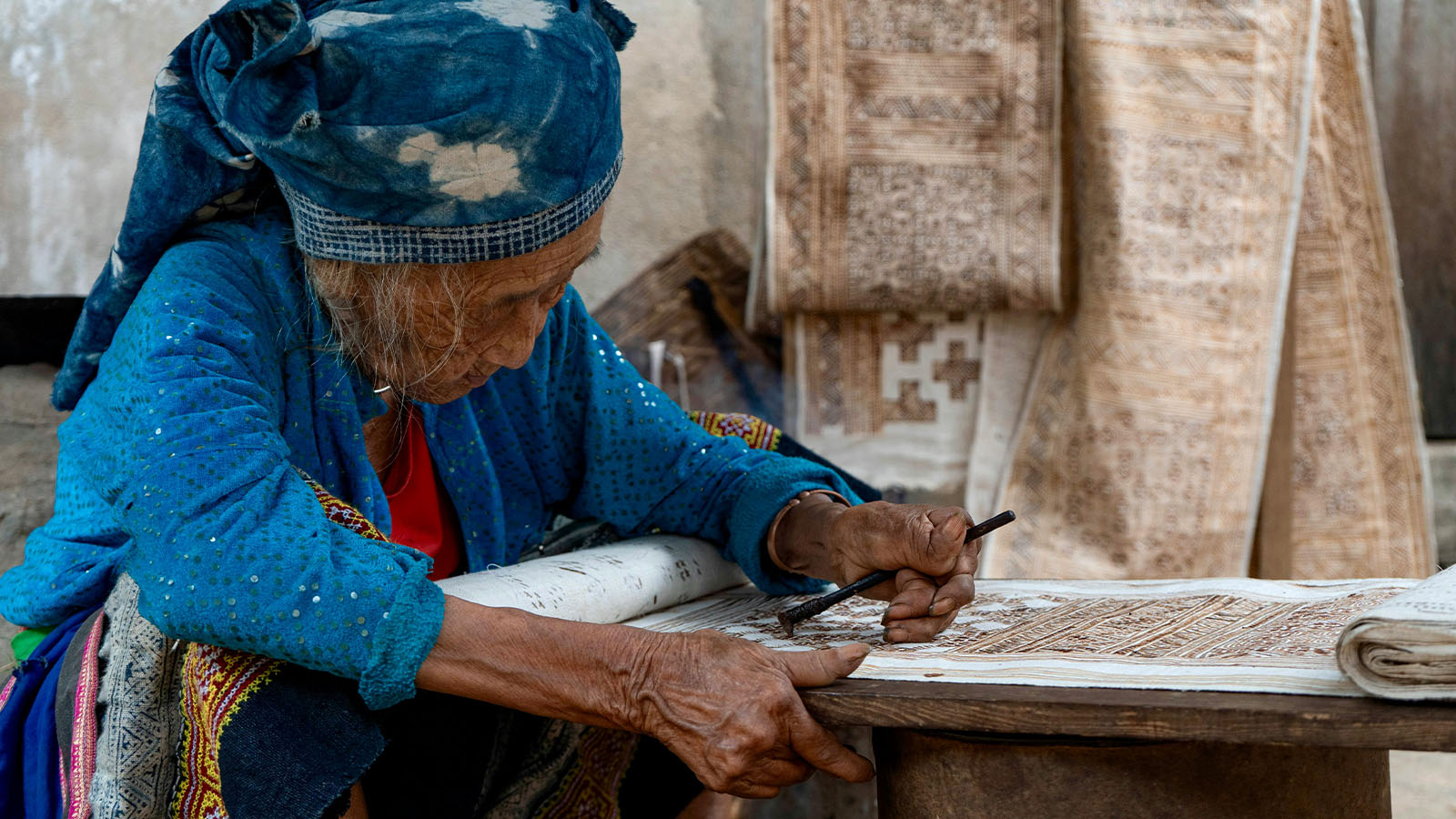
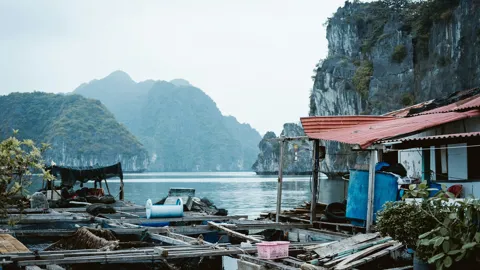



























Comment